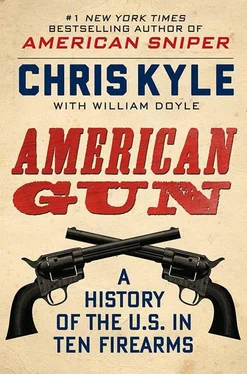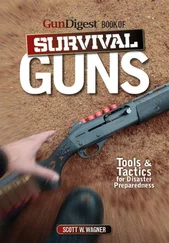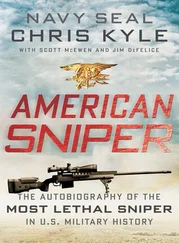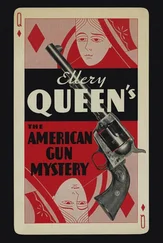“The Mauser bullets themselves made a small clean hole, with the result that the wound healed in a most astonishing manner. One or two of our men who were shot in the head had the skull blown open, but elsewhere the wounds from the minute steel-coated bullet, with its very high velocity, were certainly nothing like as serious as those made by the old large-caliber, low-power rifle. If a man was shot through the heart, spine, or brain he was, of course, killed instantly; but very few of the wounded died—even under the appalling conditions which prevailed, owing to the lack of attendance and supplies in the field-hospitals with the army.”
That’s an observation that would be made again, though in different words and context, when rifle technology took another step forward (and half-step back) with the birth of the M16 family and its 5.56 × 45mm rounds.
With the new .30-06 cartridge giving the gun serious stopping power, the 1903 Springfield became one of the best infantry rifles in the world. The Germans had a decent weapon themselves in the Gewehr 98, another improved Mauser. I’ve heard it contended that the Springfield’s manufacturing was more consistent, but on the other side of that people say its firing pin is weaker than the Mauser’s.
Take your pick. I’d happily shoot either or both any day of the week.
The Springfield 1903 first saw action in the U.S. military operations in the Philippines, Nicaragua, Dominican Republic, and in General John “Black Jack” Pershing’s deep penetration raids into Mexico, in pursuit of Pancho Villa. When World War I started, it was ready for war before the Doughboys were.
On June 2, 1918, it looked like the Germans were about to win World War I.
The Russian army had collapsed and a peace treaty between the two countries was signed in February. That set nearly fifty German divisions loose. They were switched to the Western Front, and the German General Staff got ready to push the Allies to the sea. German planes bombed Paris; their long-range guns lobbed shells in the direction of the Eiffel Tower. The British high command started planning how to get its troops back to England without having them swim. The German army had seized the initiative and shattered the spirit of the Allies. Oh, and they had Mausers, too.
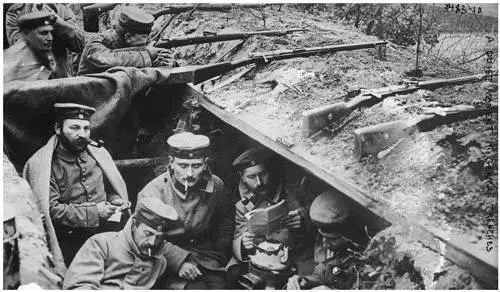
“A quiet moment in the German trenches.” Various Mauser rifles lay in position on top of the trench.
Library of Congress
The imminent capture of Paris was likely to deliver a psychological blow the French would never recover from. The Germans pressed on, sure that the Allies would soon be forced to sue for peace. Just forty-five miles northeast of Paris, near a patch of forest called Belleau Wood and the town of Chateau-Thierry, U.S. Marine Corps Colonel Albertus Wright Catlin saw the leading edge of the methodical German advance as it steamrollered through the French lines. “The Germans swept down an open slope in platoon waves,” he recalled, “across wide wheat-fields bright with poppies that gleamed like splashes of blood in the afternoon sun.”
It was a thing of beauty, unless you were tasked to stop it. The French troops fell back, fighting as they retreated across the wheat field. “Then the Germans, in two columns, steady as machines,” wrote Colonel Catlin. “To me as a military man it was a beautiful sight. I could not but admire the precision and steadiness of those waves of men in gray with the sun glinting on their helmets. On they came, never wavering, never faltering, apparently irresistible.”
What the Germans didn’t know was that a force of thousands of tough young U.S. Marines was lying in wait for them, supported by thousands more U.S. Army troops nearby. In a desperate, last-second move, they had been rushed to the scene as a blocking force to stop the German advance.
It had been more than a year since America declared war on Germany, but its troops had yet to play a major role in any battle. That was because the Allied high command didn’t think the American forces were ready to fight. They thought them soft and unprepared. Before they arrived in 1917, one British general even proposed that American recruits be used directly as replacements in British divisions, entirely under British command.
The Americans told them what they could do with that.
Even so, General Pershing, the commander in chief of the American Expeditionary Force, knew there was a lot of truth in the harsh assessment of his troops. He spent the better part of 1917 and the first half of 1918 training them up.
Now they were ready. Black Jack, who we saw in Cuba as a lieutenant, had been urging the reluctant allies to get his Marines and soldiers into real action for months. The German offensive made the French so desperate they had no choice. The U.S. Second Division, which included a brigade of Marines, and the Third Division were moved into positions along the line of the expected German advance.
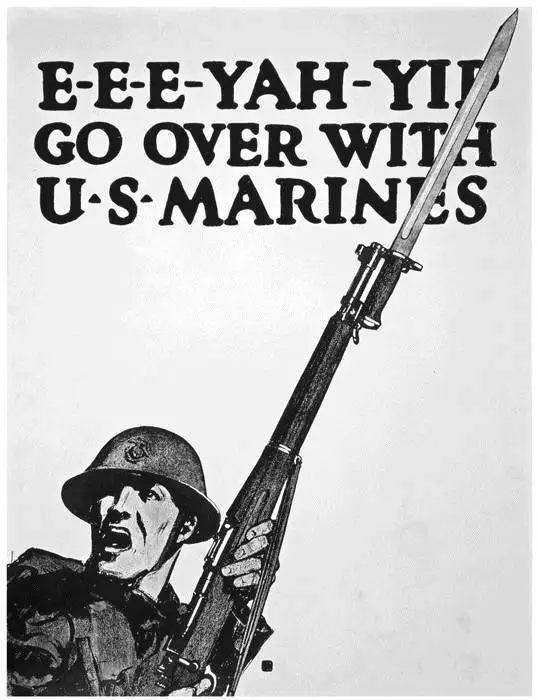
World War I recruitment poster featuring a Marine and his trusted M1903.
Library of Congress
Every one of the Marines lying in ambush was a highly skilled, long-range rifleman. The Marines were supported with some artillery and machine guns, but their main instrument of battle was the light, accurate, bayonet-tipped M1903 Springfield rifle. Each Marine had endured eight weeks of brutally intense training at Parris Island, South Carolina, drills that included extensive practice in the care and feeding of his rifle. Besides long-distance marksmanship, there was also close-quarter bayonet and hand-to-hand combat training. Unlike the Army, which assumed mass firepower from large units and didn’t pay too much attention to marksmanship, the Marines started from the idea that they’d be fighting in small units that had to make every shot count.
As they arrived in the fields near Belleau Wood that early morning, one of the Marines asked, “Where’s this here line we’re supposed to hold, Sarge?”
The reply: “We’re gonna make a line, sonny.”
The French had a line, but it was moving the wrong way. Now the Germans were aiming to blow a gap in it that would take them from Belleau Wood, across the Marne river and on to Paris. The Americans were between them and the best road to Paris for miles. As the Americans marched in, Captain Lloyd Williams of 2nd Battalion, 5th Marines Regiment, was advised by withdrawing French army troops that his best bet for survival was to fall back.
“Retreat, hell!” he said. “We just got here!”
All the Marines felt that way. As one commander explained to a French general, “We will dig no trenches to fall back into. The Marines will hold where they stand.”
The Germans who came through the wheat field that afternoon had little or no idea they were about to stumble on American Marines. Their intel had them facing the crumbling French army, and their eyes told them no different. The Americans waited until the right moment, then unleashed a barrage of rifle and machine gun fire on the German spearhead. Marines methodically picked off individual targets with their Springfield 1903s from hundreds of yards away.
“The French told us that they had never seen such marksmanship practiced in the heat of battle,” recalled Colonel Catlin. “If the German advance looked beautiful to me, that metal curtain that our Marines rang down on the scene was even more so. The German lines did not break; they were broken. The Boches [Germans] fell by the scores there among the wheat and the poppies. They hesitated, they halted, they withdrew a space. Then they came on again. They were brave men; we must grant them that. Three times they tried to reform and break through that barrage, but they had to stop at last. The United States Marines had stopped them.”
Читать дальше
